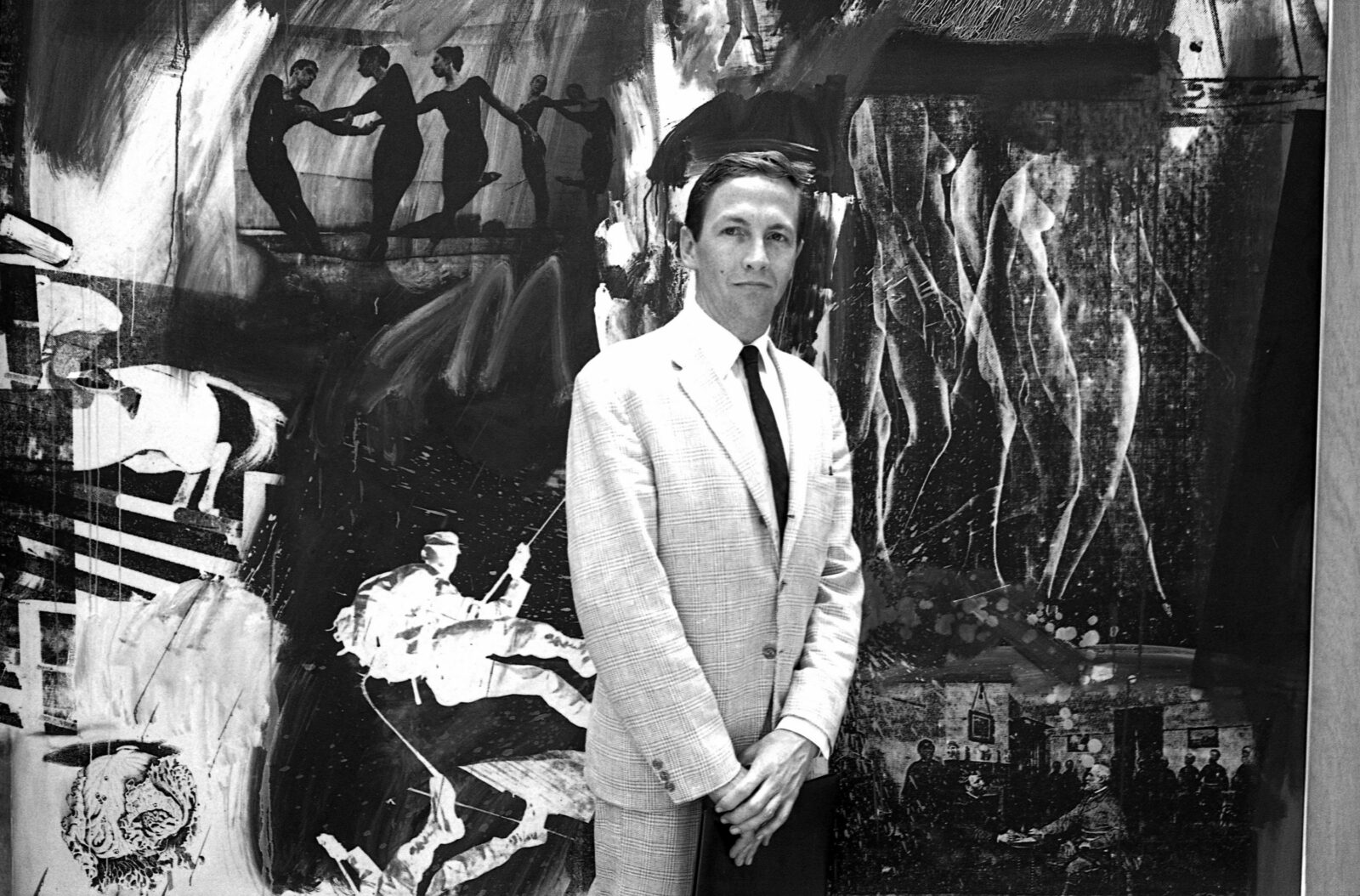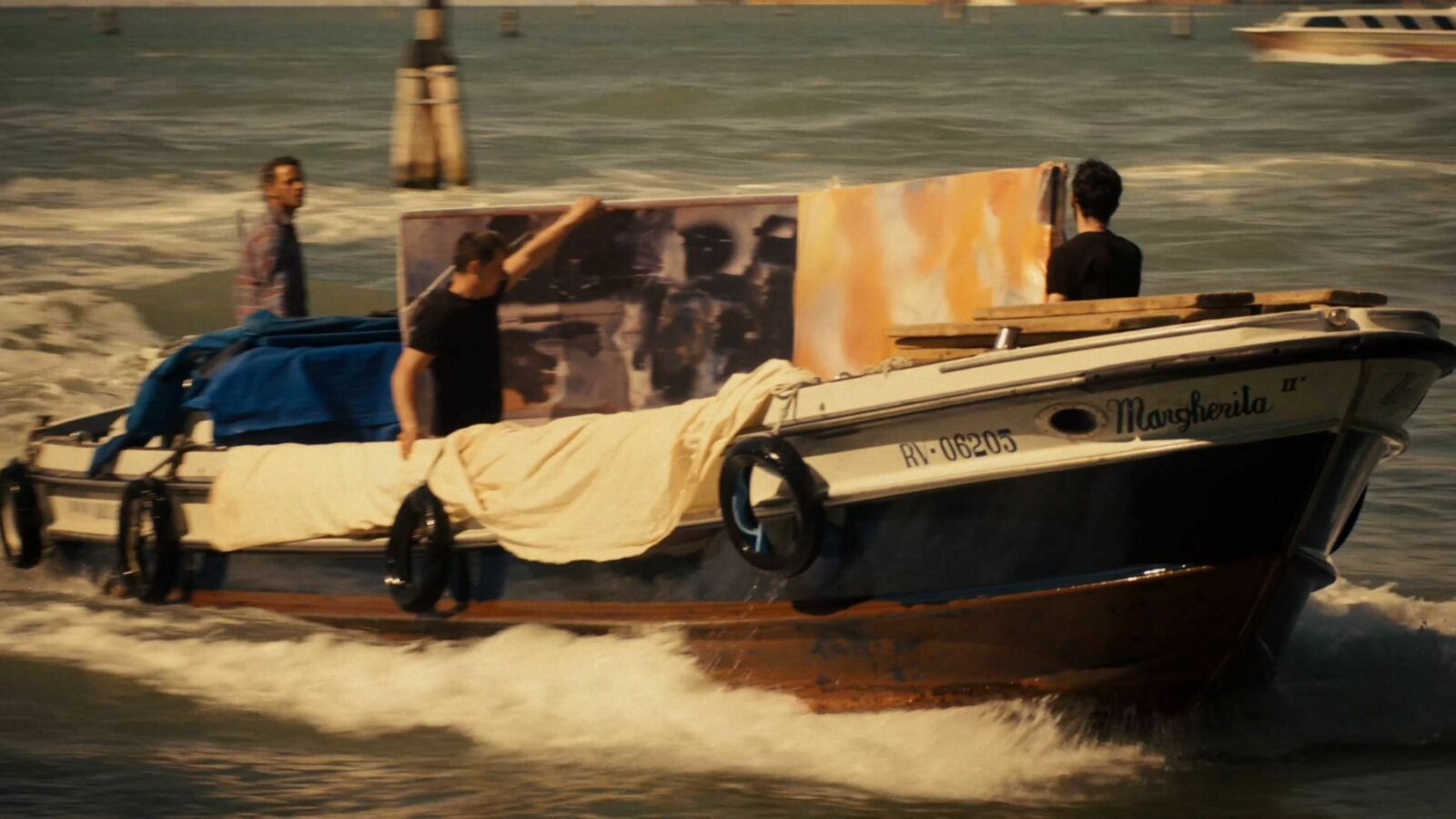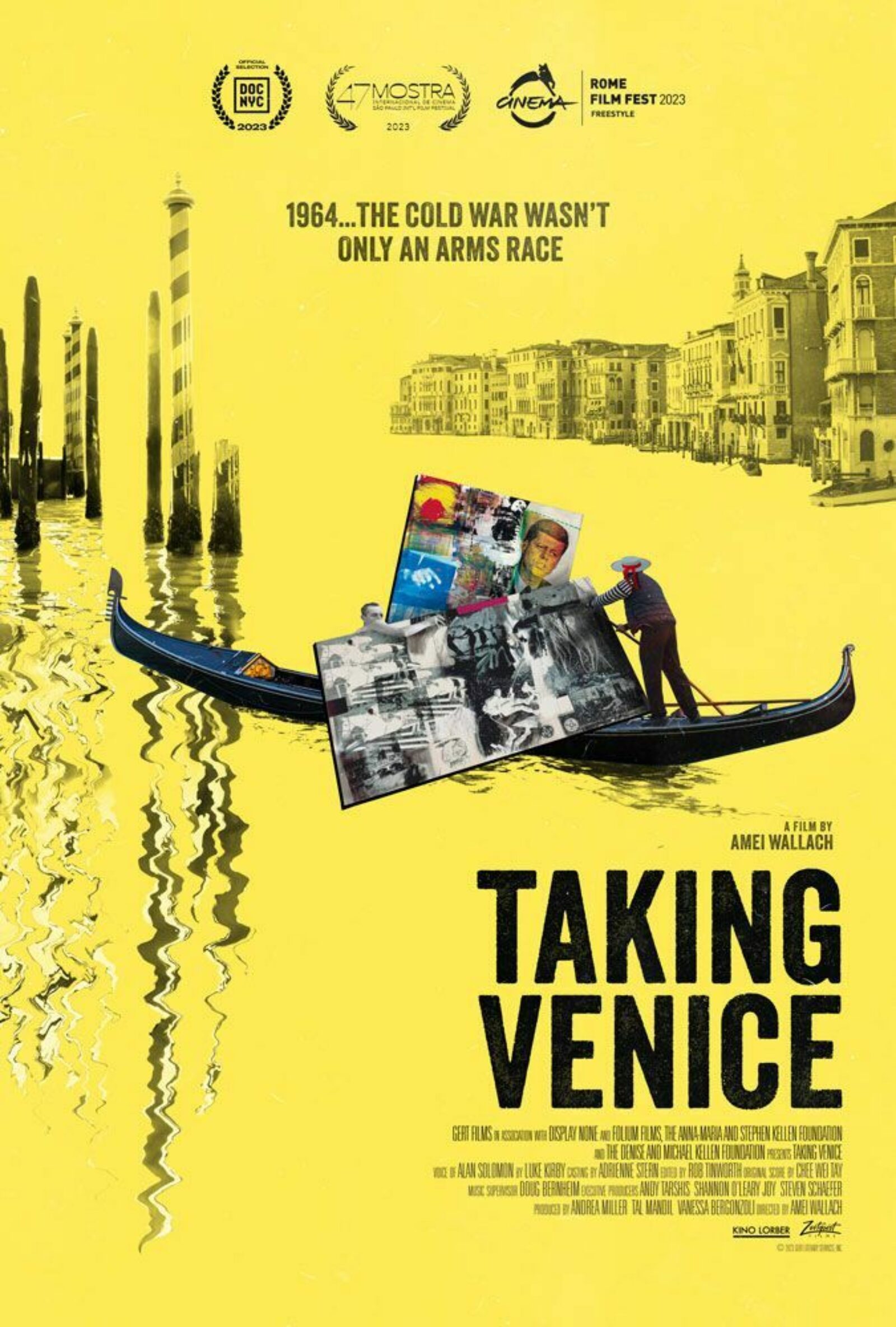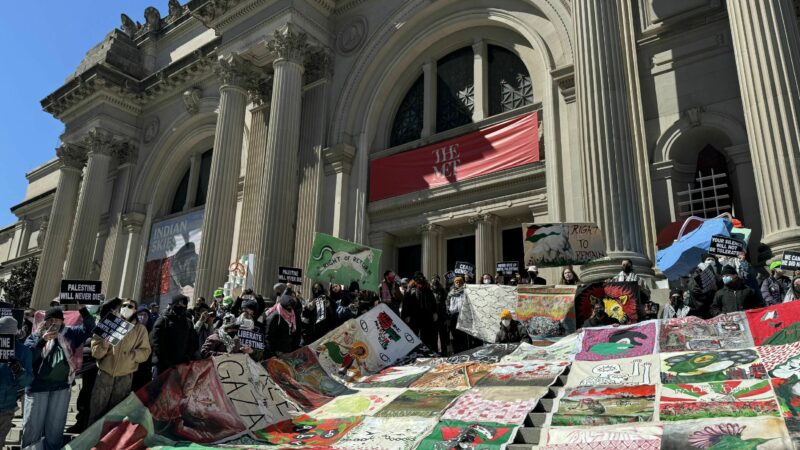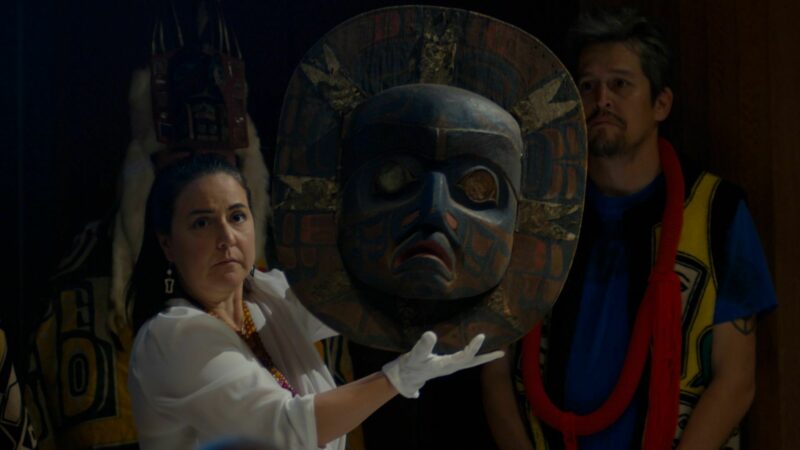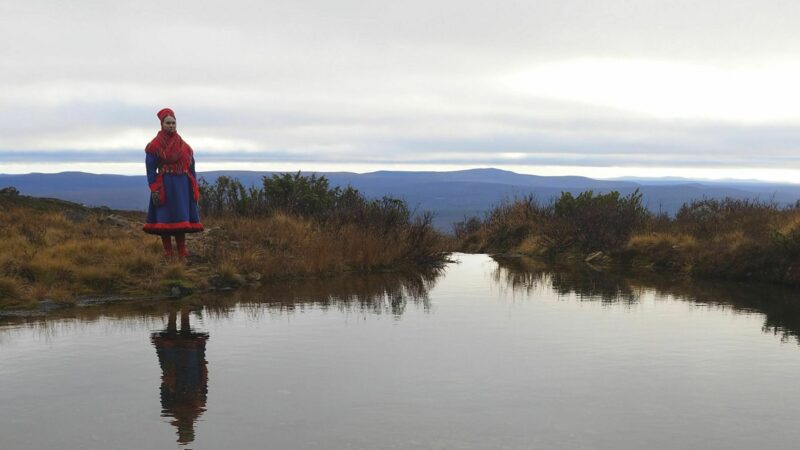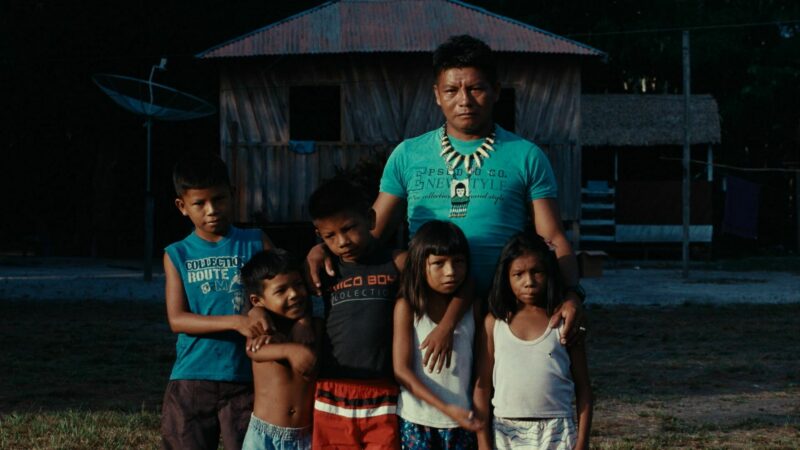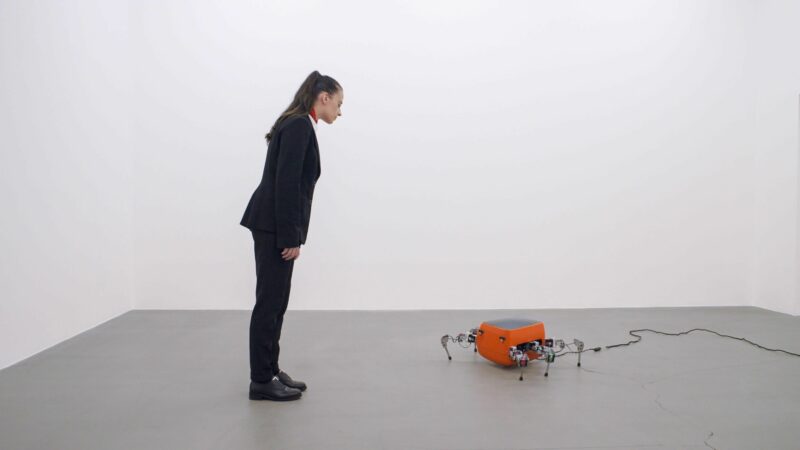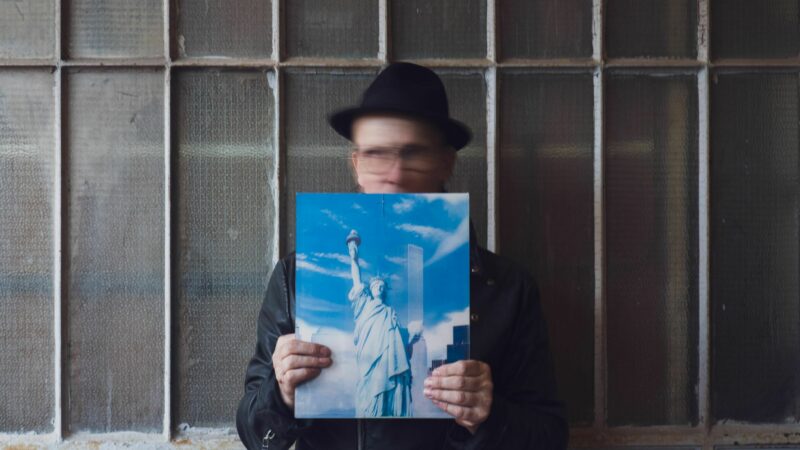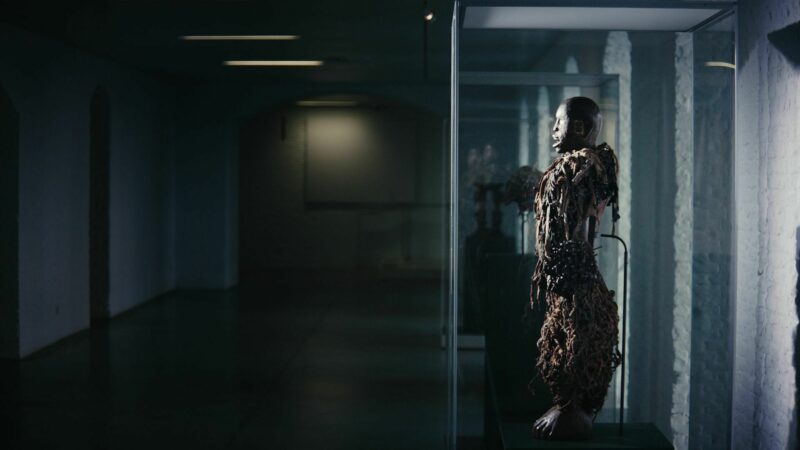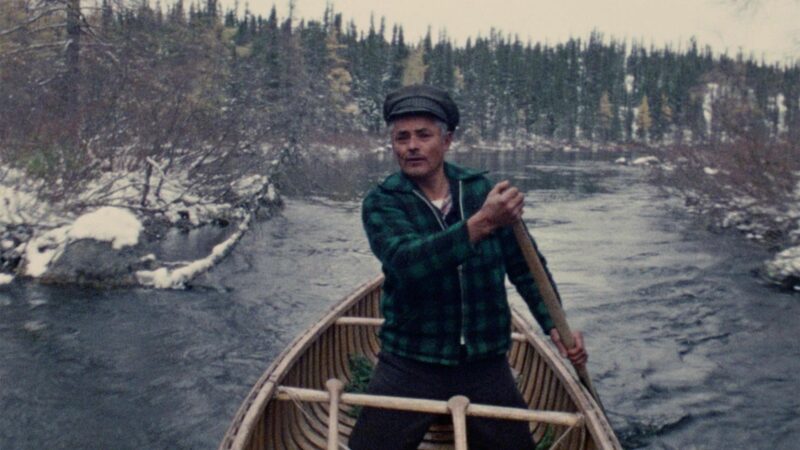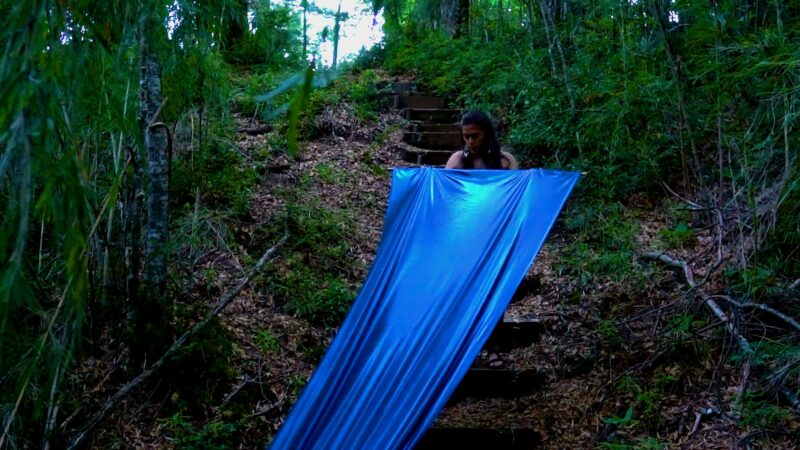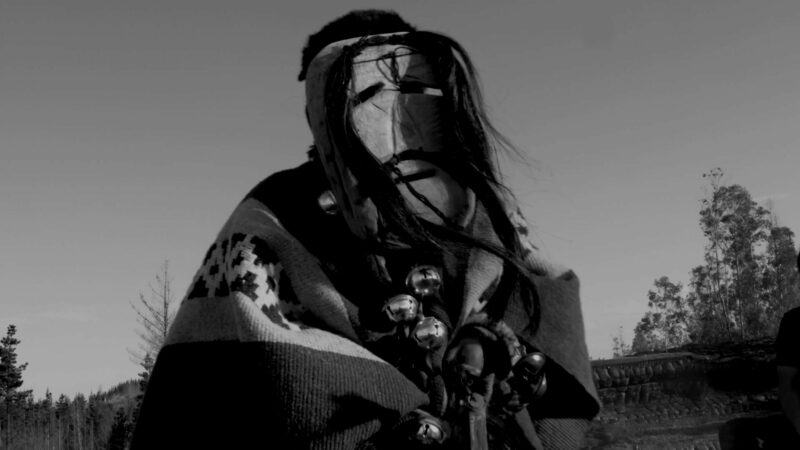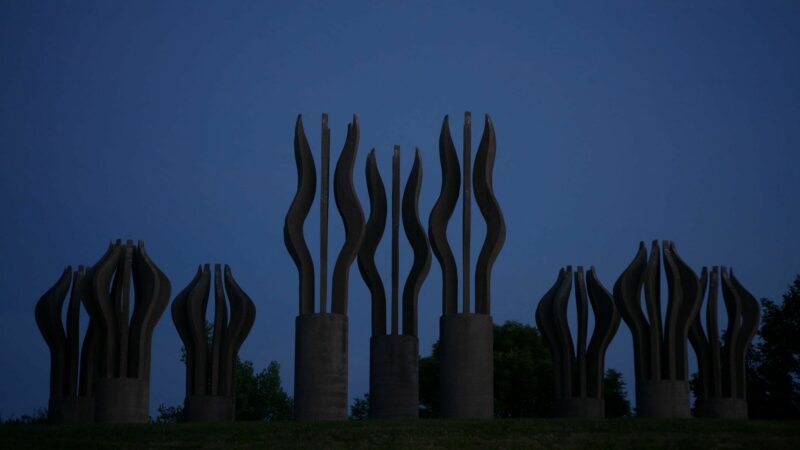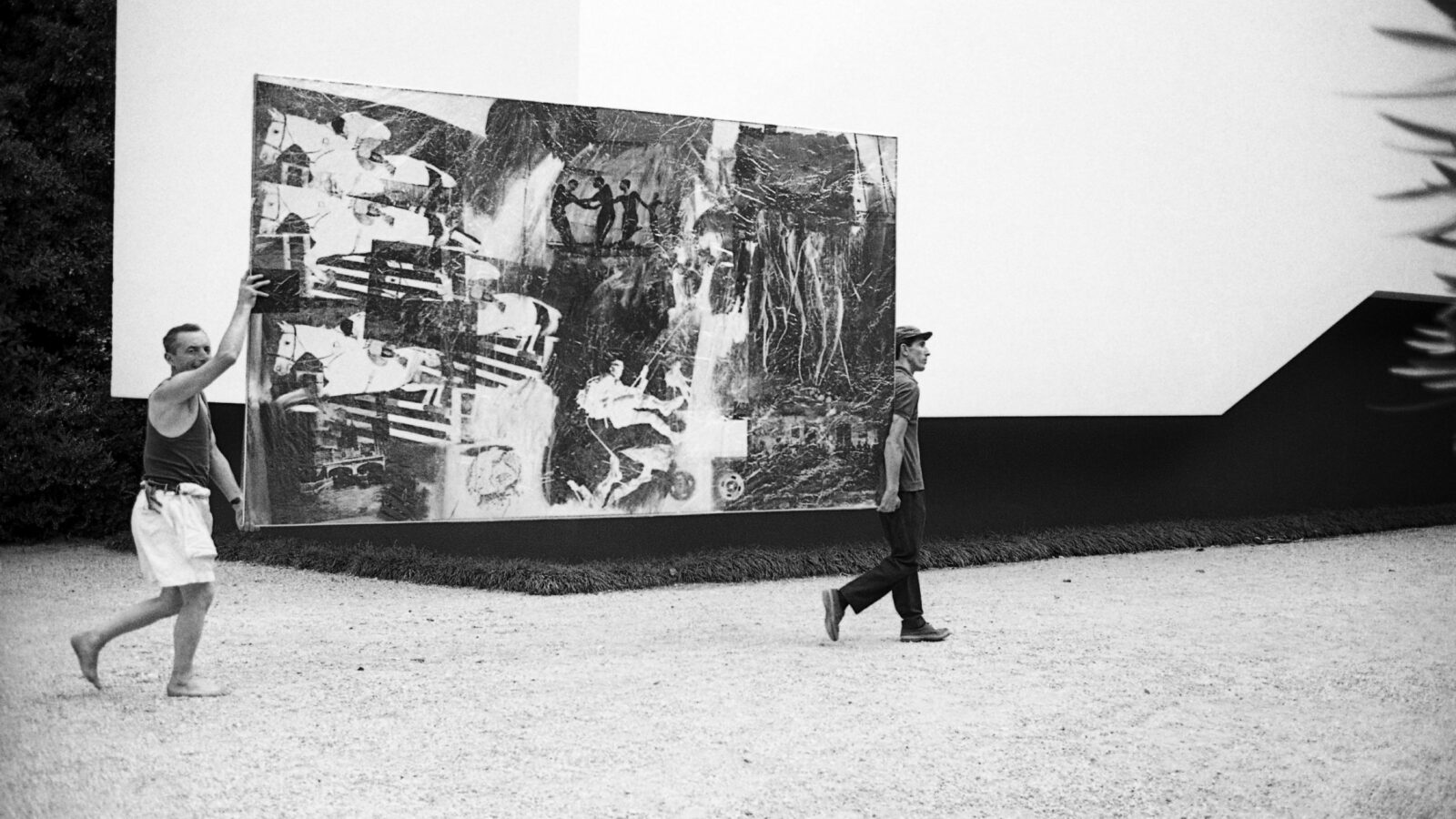
Presented only in theatres
In 1964, at the height of the Cold War, the U.S. government sets out to fight Communism through culture. The Venice Biennale, the world’s most influential art exhibition, becomes the battleground for this ideological conflict. Alice Denney, a Washington insider and friend of the Kennedy, recommends Alan Solomon, an ambitious and daring curator, to organize the U.S. entry. Alongside Leo Castelli, a powerful New York art dealer, they devise a bold strategy to make Robert Rauschenberg the Lion D’or (1964) winner. Though his work, combining street junk and pop culture imagery, is still largely dismissed, Rauschenberg holds the potential to dazzle. The American team’s maneuvers leave the international press outraged, while Rauschenberg himself begins to question the political nationalism that brought him to the event. The film also foreshadows the centenary of Rauschenberg’s birth in 2025, offering a fresh look at his lasting impact on the art world.
Director’s statement:
I grew up during the Cold War when the world seemed as dangerous as it does today. But it also seemed to be filled with possibility, with the actions of people who dreamed big and took big chances. This was especially true of artists, always looking to build something new. I became an art critic, then an author, and now a filmmaker. My goal is to make films about art that leap out of the art world and into a reckoning with what’s relevant in our lives through the stories that they tell. This film tells the story of the 1964 Venice Biennale, at a time when State Department officials and a team of unlikely conspirators were joined in their conviction that American democracy was worth the fight. They were determined to harness the audacity of American art to promote what was best about democracy. The artist they chose to represent the U.S. in their race to win the Biennale Grand Prize was Robert Rauschenberg, who was by no means a political artist, then. By the time I met him more than a decade later, he had come to believe that art had a more global responsibility. The film builds on a tradition of telling the story of America then through the eyes of now because I want it to reflect how much the world and art have changed. I want there to be moments that sting with what we have lost, and moments that encapsulate what we have gained. The stakes are even higher than they were at that scandal-drenched Biennale, as artists everywhere try to create a way forward.
- Amei Wallach
In 1964, at the height of the Cold War, the U.S. government sets out to fight Communism through culture. The Venice Biennale, the world’s most influential art exhibition, becomes the battleground for this ideological conflict. Alice Denney, a Washington insider and friend of the Kennedy, recommends Alan Solomon, an ambitious and daring curator, to organize the U.S. entry. Alongside Leo Castelli, a powerful New York art dealer, they devise a bold strategy to make Robert Rauschenberg the Lion D’or (1964) winner. Though his work, combining street junk and pop culture imagery, is still largely dismissed, Rauschenberg holds the potential to dazzle. The American team’s maneuvers leave the international press outraged, while Rauschenberg himself begins to question the political nationalism that brought him to the event. The film also foreshadows the centenary of Rauschenberg’s birth in 2025, offering a fresh look at his lasting impact on the art world.
Director’s statement:
I grew up during the Cold War when the world seemed as dangerous as it does today. But it also seemed to be filled with possibility, with the actions of people who dreamed big and took big chances. This was especially true of artists, always looking to build something new. I became an art critic, then an author, and now a filmmaker. My goal is to make films about art that leap out of the art world and into a reckoning with what’s relevant in our lives through the stories that they tell. This film tells the story of the 1964 Venice Biennale, at a time when State Department officials and a team of unlikely conspirators were joined in their conviction that American democracy was worth the fight. They were determined to harness the audacity of American art to promote what was best about democracy. The artist they chose to represent the U.S. in their race to win the Biennale Grand Prize was Robert Rauschenberg, who was by no means a political artist, then. By the time I met him more than a decade later, he had come to believe that art had a more global responsibility. The film builds on a tradition of telling the story of America then through the eyes of now because I want it to reflect how much the world and art have changed. I want there to be moments that sting with what we have lost, and moments that encapsulate what we have gained. The stakes are even higher than they were at that scandal-drenched Biennale, as artists everywhere try to create a way forward.
- Amei Wallach
Other festivals:
Boulder International Film Festival, United States (2024)
Sonoma International Film Festival, United States (2024)
NYC Documentary Film Festival, United States (2023)
Rome Film Festival, Italy (2023)
Boulder International Film Festival, United States (2024)
Sonoma International Film Festival, United States (2024)
NYC Documentary Film Festival, United States (2023)
Rome Film Festival, Italy (2023)
| Director | Amei Wallach |
| Music director | Doug Bernheim |
| Editing | Rob Tinworth |
| Music | Tay Chee Wei |
Present in these collections
Session
• Cinéma du Musée - Auditorium Maxwell-Cummings
Friday, march 14, 2025, 05:30 p.m. — 07:08 p.m.


Production
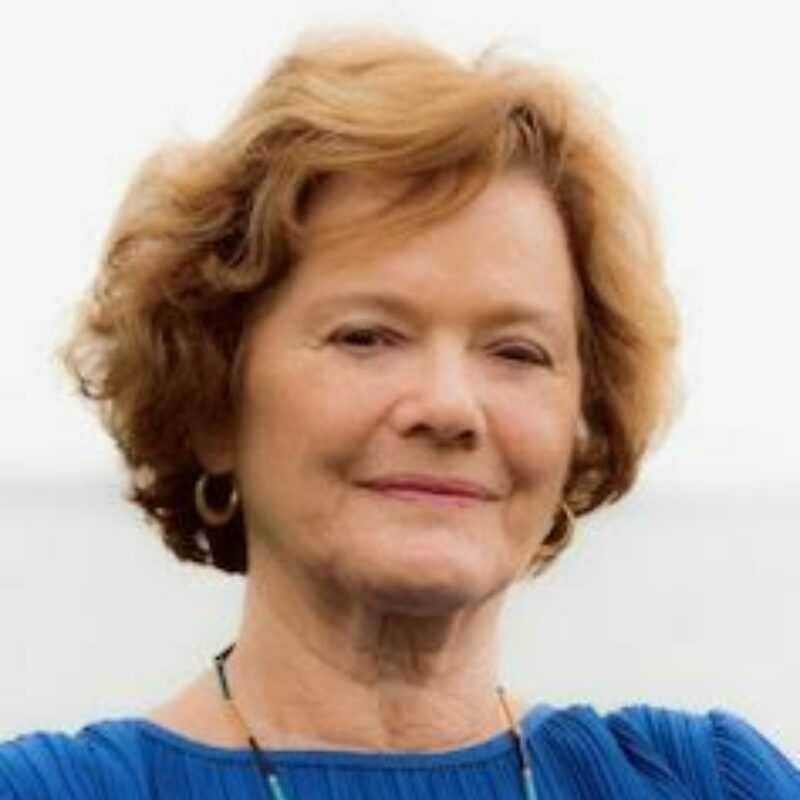
Amei Wallach
Amei Wallach is an award-winning art critic, filmmaker, and television commentator. Her critically acclaimed films, “Louise Bourgeois: The Spider, The Mistress and The Tangerine” and “Ilya and Emilia Kabakov: Enter Here”, remain in international demand. In her articles, books, media appearances – and more recently in her films – Wallach has chronicled, and known, artists from Willem de Kooning and Lee Krasner to Jasper Johns and Shirin Neshat. As an art writer, she watched Robert Rauschenberg make prints in New York and paintings in Captiva, Florida. She is uniquely able to tell this story. Wallach has written or contributed to more than a dozen books and was an on-air arts commentator for the PBS MacNeil/Lehrer Newshour. Her articles have appeared in such publications as The New York Times Magazine, The Nation, Smithsonian, Vanity Fair, Vogue, Art in America, and ARTnews. “Taking Venice” is her newest film.
Biographical notes provided by the film production team
Biographical notes provided by the film production team
Ilya and Emilia Kabakov: Enter Here (2013)
The Spider, The Mistress and The Tangerine (2008)
The Spider, The Mistress and The Tangerine (2008)
You would like




